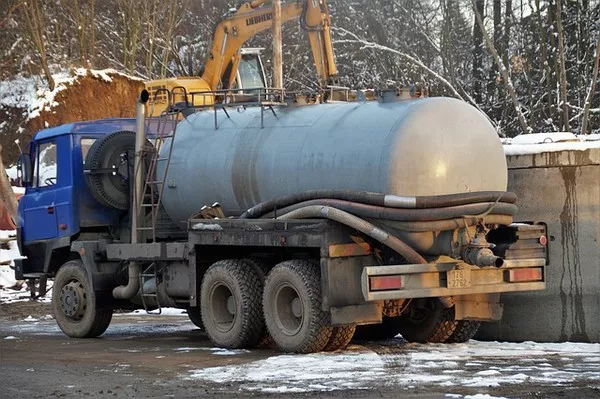Water is an invaluable resource that sustains life, drives economic growth, and supports ecosystems. However, despite its critical importance, water waste is a significant issue globally. Different countries experience varying degrees of water wastage due to factors such as inefficient infrastructure, unsustainable practices, and differing levels of economic development. This article delves into the issue of water waste, exploring which country has the highest levels and examining the underlying factors contributing to this problem.
Understanding Water Waste
Before identifying the country with the highest water waste, it’s essential to understand what constitutes water waste. Water waste typically occurs when water is used inefficiently or unnecessarily, leading to significant losses. This can happen at various stages:
Infrastructure Leakage: Outdated or poorly maintained water infrastructure can lead to substantial losses through leaks and bursts.
Agricultural Inefficiencies: Agriculture consumes a large portion of global freshwater. Inefficient irrigation practices, overuse, and evaporation losses contribute to high levels of water waste.
Industrial Practices: Industries that use water in their processes may not always recycle or manage it efficiently, resulting in waste.
Domestic Use: Households can waste water through practices such as overuse, leaks, and inefficient appliances.
The Global Context of Water Waste
Globally, water waste is a pervasive issue. According to the United Nations, an estimated 30% of water is lost through leaks in urban water systems, and agriculture accounts for around 70% of global freshwater use, with significant inefficiencies. While exact statistics on which country wastes the most water are difficult to pinpoint due to variations in reporting and measurement, some countries stand out due to their high levels of water waste.
The United States: A Case Study
The United States is often cited as one of the top countries with high water waste, particularly in the context of agricultural practices and urban infrastructure.
Agricultural Water Use: The U.S. is a major agricultural producer, and irrigation is a critical component of its farming practices. However, traditional irrigation methods, such as flood irrigation, are highly inefficient. The Environmental Protection Agency (EPA) estimates that about 60% of the water used for irrigation is lost to evaporation or runoff.
Infrastructure Issues: Aging infrastructure in many U.S. cities results in significant water loss. The American Society of Civil Engineers reports that around 6 billion gallons of treated water are lost daily due to leaks and pipe bursts in urban systems.
Residential Consumption: Americans have some of the highest per capita water consumption rates in the world. Inefficient household fixtures and appliances contribute to unnecessary water use. For instance, old toilets and showerheads often use more water than modern, efficient models.
Other Noteworthy Countries
While the U.S. is prominent in discussions about water waste, several other countries also face significant challenges:
India: India faces severe water management issues. The country’s agricultural sector, which uses around 90% of its freshwater resources, relies heavily on inefficient irrigation techniques. Additionally, rapid urbanization and population growth have put immense pressure on water resources, leading to high levels of wastage.
China: As one of the world’s largest economies and most populous countries, China struggles with water waste in both agriculture and industry. The country’s rapid industrialization has led to increased water consumption and pollution. Furthermore, traditional irrigation practices and inefficient water use in agriculture contribute to substantial wastage.
Brazil: Brazil, with its vast water resources, also experiences significant water wastage. Inefficient agricultural practices, deforestation, and infrastructure issues contribute to the problem. Despite having the Amazon River and other major water sources, Brazil faces challenges in managing and conserving its water resources effectively.
Factors Contributing to Water Waste
Several factors contribute to high levels of water waste in these and other countries:
Outdated Infrastructure: Many countries, particularly those with aging infrastructure, face high levels of water loss through leaks and inefficiencies. Upgrading infrastructure is often costly but necessary for reducing water waste.
Inefficient Agricultural Practices: Traditional irrigation methods and overuse of water in agriculture lead to significant wastage. Modernizing irrigation systems and adopting water-saving technologies can mitigate these issues.
Rapid Urbanization: Growing urban populations put pressure on water resources and infrastructure. Urban areas often struggle with outdated systems and high levels of water loss.
Economic and Policy Challenges: In many countries, economic constraints and lack of effective water management policies exacerbate water waste. Investing in water conservation technologies and implementing strict regulations are critical for addressing these challenges.
Solutions and Strategies for Reducing Water Waste
Addressing water waste requires a multifaceted approach involving technological, policy, and behavioral changes:
Infrastructure Upgrades: Investing in modern, leak-proof infrastructure can significantly reduce water losses in urban areas. Regular maintenance and timely repairs are also essential.
Adopting Efficient Irrigation Techniques: Transitioning to more efficient irrigation methods, such as drip irrigation, can reduce water wastage in agriculture. Implementing precision agriculture technologies can also help optimize water use.
Promoting Water-Saving Technologies: Encouraging the use of water-efficient appliances and fixtures in households and industries can contribute to reducing water waste. Incentives and subsidies for such technologies can accelerate adoption.
Education and Awareness: Raising awareness about the importance of water conservation and promoting water-saving practices at the individual and community levels can help reduce domestic and industrial water waste.
Policy and Regulation: Governments play a crucial role in managing water resources. Implementing and enforcing policies that promote water efficiency, investment in infrastructure, and sustainable practices can drive significant improvements.
See Also How Wastewater Treatment Works
Conclusion
Identifying the country with the highest water waste involves examining various factors, including agricultural practices, infrastructure quality, and domestic consumption. While the United States, India, China, and Brazil are notable examples of countries facing significant water waste issues, the problem is global and multifaceted. Addressing water waste requires coordinated efforts across technology, policy, and individual behavior to ensure sustainable water management and conservation. As the world grapples with the challenges of climate change and population growth, effective water management will be crucial for securing this vital resource for future generations.

